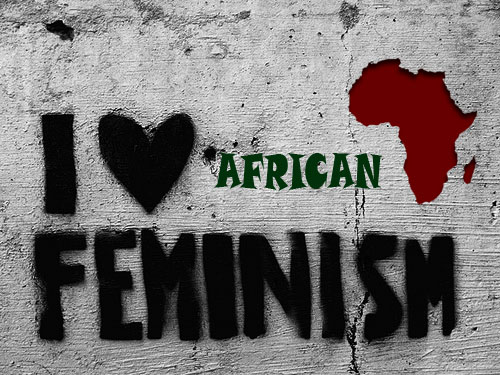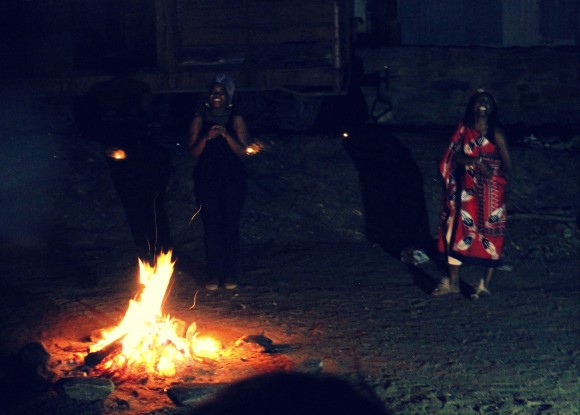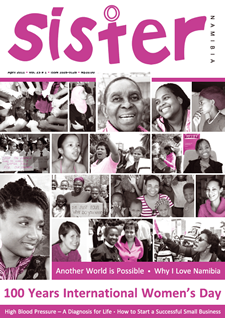
Today is Dec. 28:
The Story of Tyisha Miller.
December 28, 2012ByI always remember Tyisha Miller. Today I remember even more painfully because it is the anniversary of her embittering death. December 28, third day of the African American holiday of Kwanzaa. Before I tell you about a play I recently saw about her murder, let me give the back-story.
In the early morning hours of December 28, 1998, Tyisha Miller, a 19-year-old African American woman from Rubidoux, Riverside, California, had been driving with her 15-year-old friend late in her aunt’s Nissan Sentra when the car got a flat tire. A passing stranger helped them change the tyre, but the spare was flat, so the stranger led them to a filling station to inflate it. The tire would not hold air so Ms. Miller waited in the car while the man drove her friend home to get assistance from the family.
When relatives arrived they found Ms. Miller apparently comatose in the locked car, with the engine running and the radio on. She was shaking bodily and foaming at the mouth, and had a .380 semi-automatic pistol in her lap. Unable to wake her they called 9-1-1. Four Police officers arrived at the scene within minutes and, informed by family members of the presence of a gun in the car, approached the vehicle with guns drawn. After attempting for several minutes to get a response from Miller, the decision was made to force entry into the vehicle as Miller was in apparent need of immediate medical attention. As one of the officers was attempting to remove the gun, Miller is said to have sat up and grabbed the weapon, at which point the officers opened fire 23 times, hitting Ms. Miller with at least 12 bullets, including 4 in the head.
Back to the play, I recently had the honor of meeting the mastermind behind this play, Rickerby Hinds. He has been revolutionizing the landscape of Black performance with his hip-hop theater, a sub-genre of theater that uses beat-boxing, rapping as delivery of dramatic meaning on stage. As I sat in that theater watching this brilliant play called Dreamscape, I was hit by a bitter sense of familiarity with the play. I recognized the excellent portrayal of the daily micro-aggressions I endure as a Black man living in the US. I recognized the pain and the fear that flashes before my eyes everytime I get stopped by police for “fitting the description” of a burglar on the loose. And that description? Dark Skin.
Rickerby Hinds’ docu-dramatic play, Dreamscape is a stirring account of the cold murder of Tyisha Miller, a 19-year old African-American whom police officers shot when they found her comatose in her car. She was intoxicated – yes – but the bone-splitting bullets that rained upon her body remain a bitter, if unnecessary, reminder of racist police violence in the US. Using elements that an American audience would see as markers of Black culture in the US such as hip-hop, beat-boxing, ebonics etc., Rickerby Hinds cleverly weakens the power of the stereotype and makes way for multiple narratives of Blackness, or at least a Blackness definition that includes humanity. By that I mean that he does not deny that some of us Black people enjoy hip-hop for example but he shows what else we love – simply being human and being perceived as such without need to be spectacularized. There is an underlying tone of Negritude, of re-claiming racial charges, with which Hinds adapts the Tyisha Miller story.
As a Black man living in the US, I am an angry object of both White-against-Black racism, and America-against-foreigner racism. I am a fetishized token of diversity and Americans expect me to the embodiment of all things insultingly “cultural,” primitively “African” and so forth, completely erasing my individuality out of the picture. It is through my facelessness then that I recognize Tyisha’s. Before the law, she is just another Black body and that is why the said police officers can joke about her death, remarking laughingly that Kwanza having come early for her grieving family. To these laughing policemen, she is not someone’s daughter or sister, in the eyes of these keepers of law and order. She is just another one from that traumatized incomprehensible group that has hopped labels from Nigger to Negro to Black American to African-American in search of a name that cures the trauma of history only to find endless yearning for belonging.
Miller’s blood was spilt at the hand of police officers and as such the playwright uses the coroner’s report as his source material. In this way Hinds is able to show how draconic the American justice system is without ranting against it but rather holding up a mirror to the system itself. This literary device is well-employed to allow the audience to start its own conversation about the law and hopefully with the law. Another way that Hinds holds up the mirror – although this time to his audience – is by having a Black actor portray the police officers, none of whom were Black. Consumption of the Black body in American art and entertainment is of a body that can do too many things – like loudly sing, jump up and down as a minstrel, shout melodiously, contort like a snake, frighten with its gaze, seduce with its Otherness – but is never the face of the law, at least not in a way that calms anxious racists. Seeing the voice of the law embodied in Black skin therefore forces the audience to confront its prejudices therefore. You cannot deny that this is the legal report. But why is it strange to you that it is coming from a Black body, despite that body being American just like its blonde and blue-eyed compatriots? The audience gets to see its own prejudices and then hopefully that softens them to the adapted story of California’s Tyisha Miller.
Along the same vein of corporeal embodiment, Hinds exemplifies how adaptation can succeed transmedially. I am reminded of Josephine Baker who, although she is never included in the list of Negritude writes, did write with her body. She used her body as text and instrument in order to carve out new images of Black women’s power on stage and in returning the gaze of their spectator. In a similar manner, Hinds not only takes Tyisha’s emotions and last thoughts and puts them into the written word but also puts them into dance. Again, this being a hip-hop theater piece, I heard audience members’ airing their expectations of booty-popping before the show. But Hinds showed them a Black female body gliding through balletic movements with her clothes on which is a far cry from the Black female bodies that exist in hip-hop music only to writhe on truck-tops wearing only their underwear. The source material here, hip-hop music (especially for the beat-boxing parts), is re-territorialized in the process of adaptation in order to dismantle the single story of misogynist hip-hop, to dismantle the single story of the vixen Black dancer, to quietly and hopefully show that perhaps Tyisha’s life was more than her drug use or her skin.
Today is December 28. I am in California. I am Black.
__________________________
__________________________
TYISHA MILLER:
She was many things to different people
She will say a short prayer, tell Miller she misses her, and pray that God is watching over her.
>via: http://www.pe.com/local-news/reports/tyisha-miller/tyisha-miller-headlines/20...
__________________________
No Charges in
Killing of Tyisha Miller
The Justice Department says it finds insufficient evidence to prosecute four white Riverside police officers who shot the black woman in car.
The Justice Department's civil rights division said Thursday it had found insufficient evidence to prosecute four white Riverside police officers involved in the 1998 shooting death of a 19-year-old black woman who passed out in her car with a gun in her lap.
"Tyisha Miller's death was a terrible tragedy," said Assistant U.S. Atty. Gen. Gerald Boyd. "Our decision to close this investigation does not signal approval of the conduct of these officers, or indeed any official opinion concerning their conduct, but the bottom line is that our investigation, which was conducted conscientiously, has not revealed enough evidence to support federal criminal prosecution."
Debra W. Yang, the U.S. attorney in Los Angeles, met with Miller's family to convey the Justice Department's findings, a spokesman said. Some relatives and family supporters reacted with anger and disappointment.
Miller's death created an uproar among many African Americans in Riverside, exposing a deep racial divide. It also led to intervention by state Atty. Gen. Bill Lockyer, who ordered the Police Department to adopt a sweeping reform plan designed to root out any racism.
Lockyer's office also declined to prosecute on grounds of insufficient evidence. However, the four officers were fired. Two are fighting to be reinstated.
Boyd said federal investigators reviewed the results of the local investigation and then began their own probe, interviewing witnesses to the shooting.
Miller was killed Dec. 28, 1998, when the four officers were summoned to a service station where she had locked herself in her disabled car, and then passed out while a friend had gone for help.
The officers said they tried unsuccessfully to rouse her. One then broke a side window, according to the police account, causing Miller to sit bolt upright. Fearing for their lives, they said, they opened fire. Miller did not fire her gun. Officers fired 24 times, striking her with 12 bullets.
"Our investigation did not reveal evidence disproving the officers' claim that they subsequently shot out of fear for their safety," Boyd said. "All eyewitnesses confirm that Ms. Miller had a gun in her lap and the forensic evidence corroborates the claim that she sat up -- a perceived movement toward the gun -- when one of the officers shattered the window of the locked car to gain entrance and render aid to Ms. Miller."
He said the federal investigation revealed that the first shots were fired while the officer who had shattered the window was leaning inside the car trying to reach for the gun in Miller's lap.
The fact that the officers admit firing even while their colleague was leaning into the car is strong evidence that they acted out of fear rather than with any malicious intent, Boyd said.
The Justice Department is still conducting a civil investigation into the policies and practices of the Riverside Police Department, Boyd said, including an analysis of its dealings with minorities.
Despite the decision not to prosecute, U.S. Atty. Yang said her office remains committed to prosecuting civil rights violations whenever the evidence supports criminal charges.
The mayor of Riverside, Ronald Loveridge, said Thursday night that "this is another chapter, among the last to be closed. The city has moved forward. We've increased the professionalism and community policing. There is widespread community support for the Riverside Police Department."
He also said the city respects "the legal skills and values and research that led to the Department of Justice's decision."
But the decision was criticized by some in the community who had been involved with the family or the case. It also rekindled a bitter disagreement within the community over the Miller family's decision to settle a wrongful-death lawsuit with the city for $3 million.
The Rev. Bernell Butler, a preacher and Miller's cousin, said he disagreed with the decision to settle but backed the rest of the family at the time. Now, he said, he believes the settlement is coming back to haunt Miller's relatives.
"When they settled, it gave the federal government an out to sweep this thing under the carpet. It took away the drive and motivation for justice," Butler said. "These guys murdered her with malice, prejudice and bigotry. She was murdered. And she was a good girl."
Carolyn B. Murray, a member of the Tyisha Miller Steering Committee and a professor of psychology and ethnic studies at UC Riverside, said she was disappointed with the decision, but not shocked.
"They don't prosecute white, male police officers. They just don't -- even when the evidence is overwhelming," Murray said. "That's the American way. People say we live in a democracy. It's a facade. It's a democracy for a few."
Murray agreed with those who found the government's explanations lame at best.
"They had enough evidence to try those officers, if not on the count of murder, then on manslaughter or violating her civil rights," Murray said. "The officers that were involved all told different stories about what happened. But they all agreed on one thing: The first bullet was fired from outside the car."
Larry Halstead of Highland, a friend of Miller's family and an original member of the Steering Committee, said civil rights activists worked for weeks after the shooting to persuade angry youths not to take to the streets with violence.
"We kept all that from happening," Halstead said. "And this is how you repay us. This is what I told [federal prosecutors]: 'You undermined our credibility. You treated us like a bunch of thugs.' They are sending a message that is the wrong message. They are sending a message to the citizens of the United States that cops are going to get away with this."
>via: http://articles.latimes.com/2002/dec/13/local/me-tyisha13













